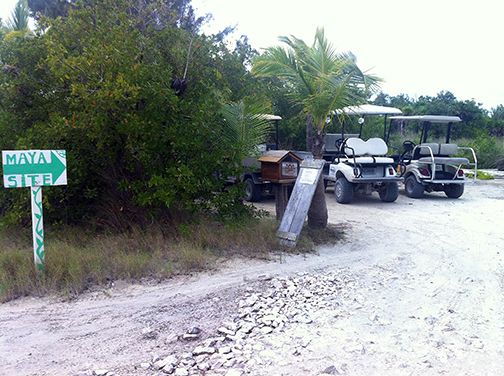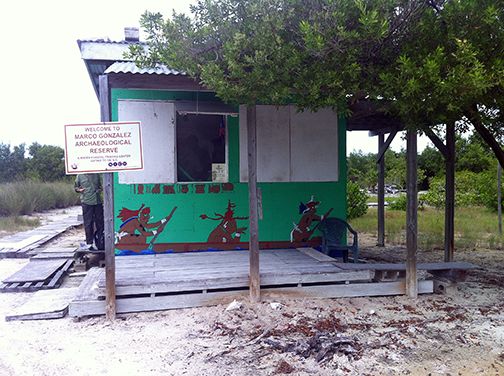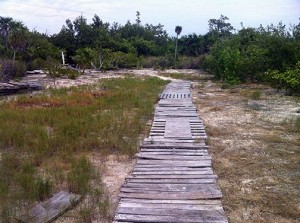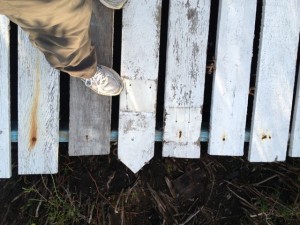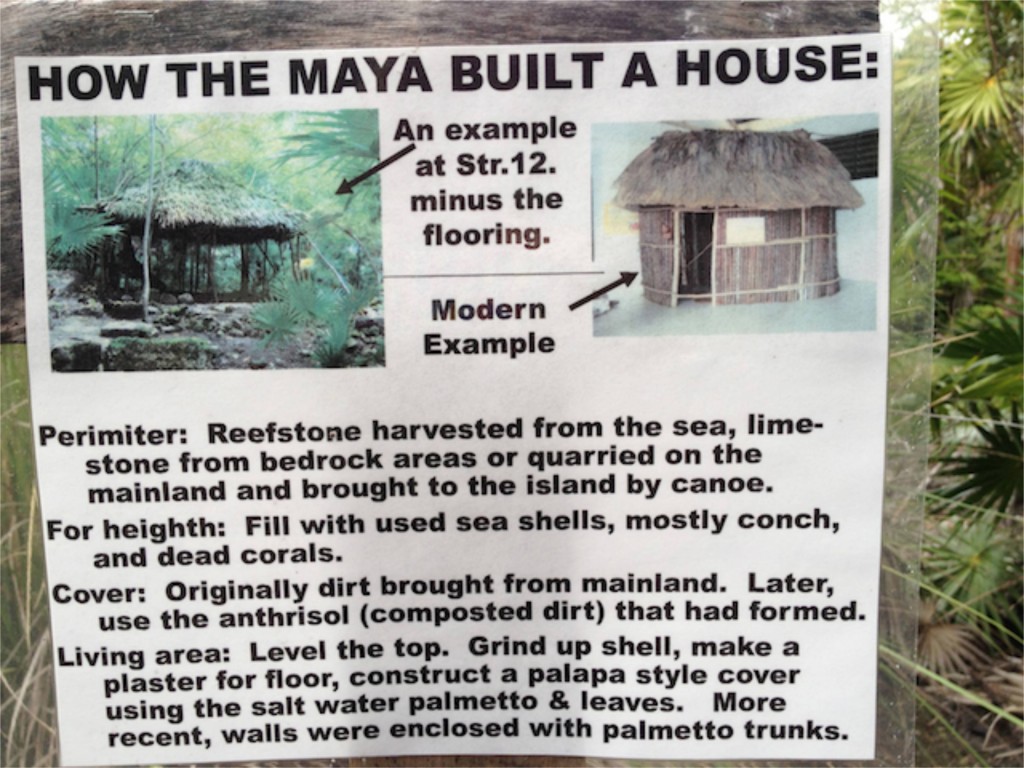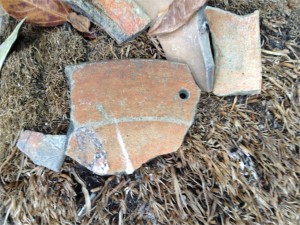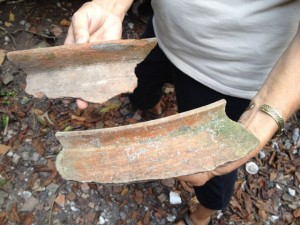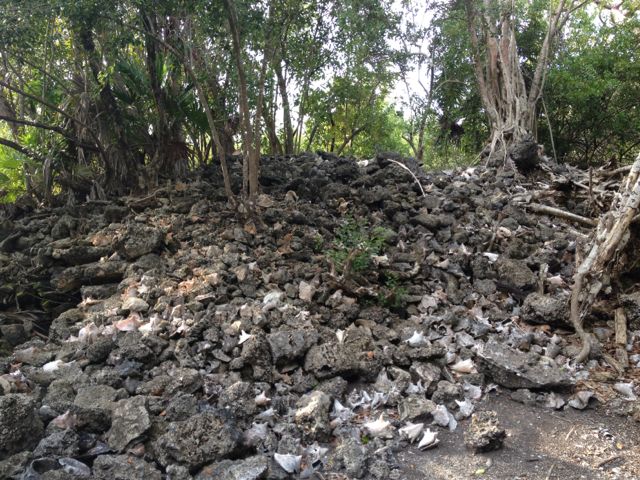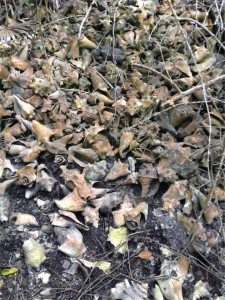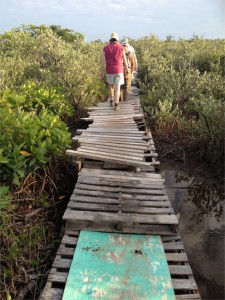February 16, 2013, Ambergris Caye, Belize
Geoffrey organized a fine afternoon outing. We went on a guided tour of the Marco Gonzalez Maya excavation site on the south end of the Ambergris Caye. Unlike many on the mainland, this site is (almost) un-excavated.
Geoffrey was able to set up a guided tour just for us with the site curator, Jan Brown.
It was quite fascinating — very different from seeing an un-excavated site; it was critical to have the expert guide with us to explain what we were seeing.
The ruins are at the far south of the island, a long, bumpy golf-cart ride away on an unpaved road.
Belize has no money to develop or excavate the site. Dr. Elizabeth Graham at the University of London has taken on the project, but lacks grant money. Occasionally, she and some students who can pay their own way come to Belize and carry on the work. Visitors’ entrance fees are used to pay a guide/guard/fee-collector who is on site during business hours.
At the visitors’ centre, we admired a selection of small treasures collected from the site: decorated pottery fragments, obsidian blades (traded — there’s no local obsidian), shells used as pendants, belt ornaments, and stones used as fishing weights.
The site is guarded by mosquitoes, which are huge, numerous, and ravenous. We came prepared, in long pants, shirts and hats. However, some visitors arrived in shorts and sun dresses and were chased away by the mosquitoes; it was painful to watch. Mosquitoes not withstanding, there had been a fair bit of looting over the years. Several places were pointed out to us as looters holes — I wonder what they got away with.
The site was originally a Maya fishing village, surrounded by water, but the area is now filled in and surrounded by marshy land. This encroachment may have been the reason the village was abandoned.
Now, to get to the site, there is a 1/4 mile boardwalk over a mangrove marsh.
The site itself needs imagination to envisage. There are foundations for the houses, but not much more. It was helpful to see the modern-day mockup and drawings of what might have been.

This was the most impressive area of the village: the main plaza with big steps up to the chief’s house.
The ground everywhere on the site was littered with pottery fragments and broken blades and used shells — makes us think yet again about the waste we leave behind.
The shard above with the hole in it was of special interest to me — when pots broke, some could be repaired by drilling holes on either side of the break and tying with twine. This was the same technique that Pete used to fix our broken paddle. (See How to make a Franken-paddle.)
On the edge of the site was a huge midden of conch shells. Conch for dinner? Dispose of the shells at the conch midden after dinner. The shells were used as foundations for homes. Also, it is supposed that this hill of shells served as a landmark to help boats find the village. A fire could be lit atop to create a light-house to guide boats returning after dark.
We enjoyed our tour of the the Marco Gonzalez site with the enthusiastic Jan Brown. Here we are strolling back along the boardwalk in the late afternoon.

